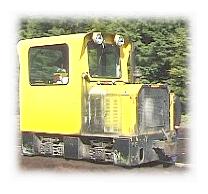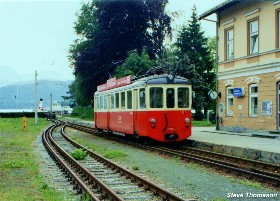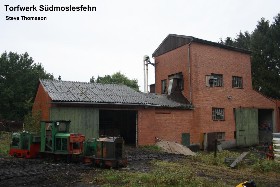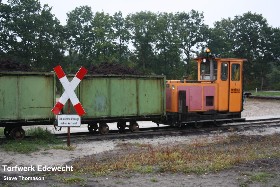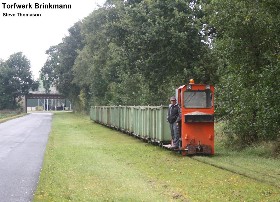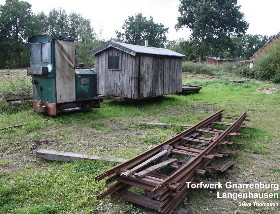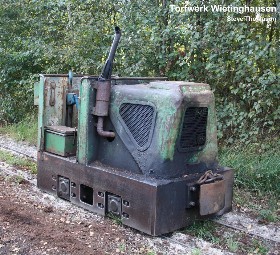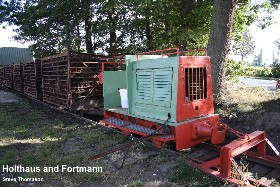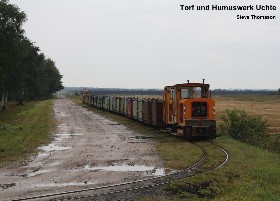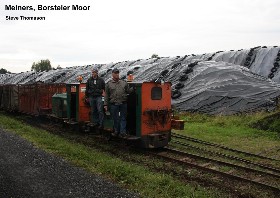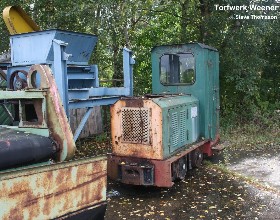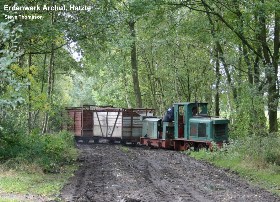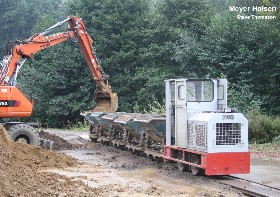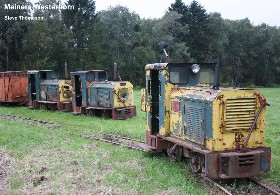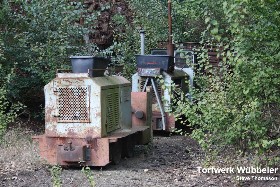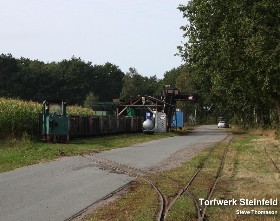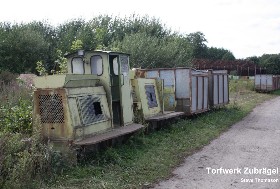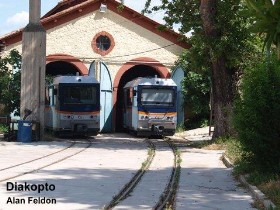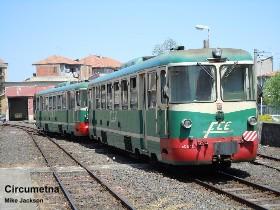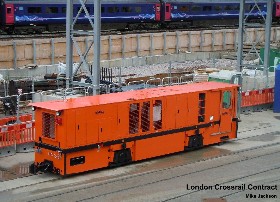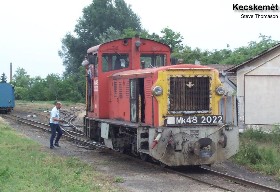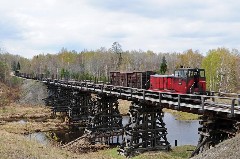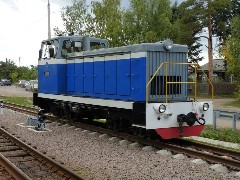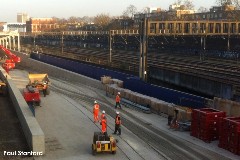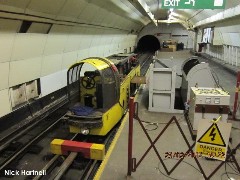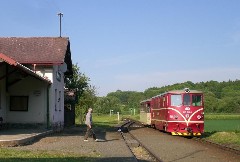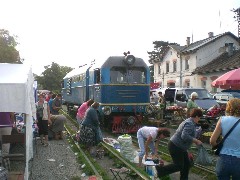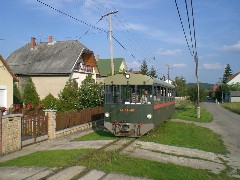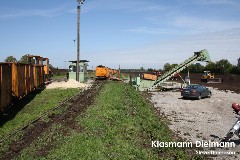ENGLAND: May 2012
Crossrail site, Paddington
(approx 2ft, confirmation required) By the 10th of May rolling stock and a loco (a white Schöma) had been delivered to the CrossRail site at Paddington. The photo below (on the 18th May) shows initial testing being carried out with a loaded train.
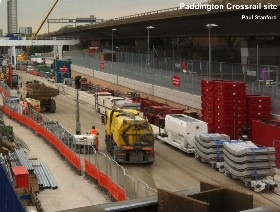
It is reported that the tunnel boring machines started cutting on about the 8th May, and so the railway will have been required shortly after this date to move the concrete lining panels into place. By the 24th May a second loco had arrived on site, in orange livery.
(Posted 09.06.2012 Source: Paul Stanford)
|
Czech Republic: May 2012
JHMD, Jindrichuv Hradec
(760mm) A belated report from Patrick, from a visit in 2011, confirms that standard gauge frieght wagons are still being regularly carried on the line operated by JHMD centred at Jindrichuv Hradec. Apparently there is Frieght service between Jindrichuv Hradec and Kunžak-Lomy, which serves a scrapyard near the station of Kunžak-Lomy. A photo from 2011 is shown below.
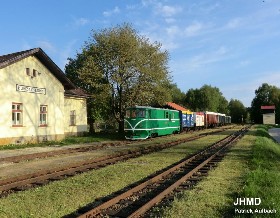
(Posted 09.06.2012 Source: Patrick Aulbach)
|
RUSSIA: June 2012
Alapaevsk Narrow Gauge Railway, Sverdlovsk region
(750mm gauge) The Alapaevsk railway also known as the AUZHD, was once the largest narrow gauge railway in Russia, at 710km. Over the years this has shrunk back to the current estimated length of 200km. Just 30 years ago it was carrying about 1 million tonnes of timber a year and by the 1980's there were approx 50 locomotives still recorded on the line. Recent reports suggest that the whole railway had declined and operations were only taking place over parts of the original network, with many other areas demolished, and timber transport reduced to a fraction of it's original tonnage.
However, the railway is seen as a lifeline to a large number of isolated villages throughout the area, and significant pressure to repair parts of the network have now had some success with several bridges repaired in the last year, and an estimiated 30,000 sleepers replaced. The prime minister of the region has now pledged 50 million Rubles to the railway over the next 2 years.
Details of this railway with historic and current photos, can be found here, and if using Google Chrome, the automatic translation works well from Russian into English.
(Posted 09.06.2012 Source: Andrey Ilin)
|
